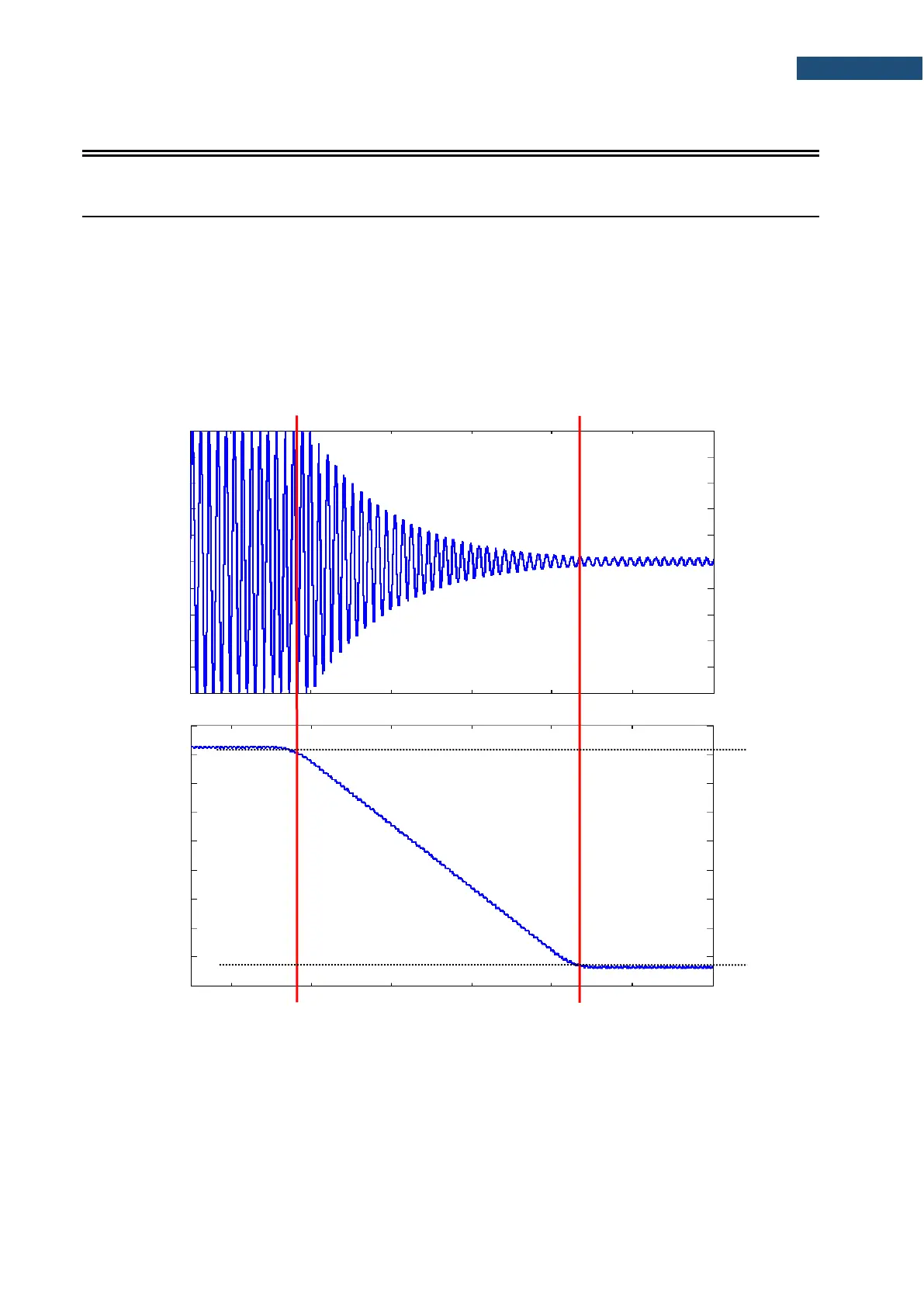SV 977D User Manual - Appendixes
APPENDIX E. REVERBERATION TIME CALCULATIONS
If an impulsive sound is generated in a room with reflecting boundaries, repeated reflections at the
boundaries result in the rapid establishment of a more or less uniform sound field. This field then decays
as the sound energy is absorbed by the bounding materials. The rate at which the sound energy decays is
determined by the absorptive properties of the reflecting surfaces and the distances between them. The
time taken for the sound intensity or the sound pressure level to decay by 60 dB is called the reverberation
time (RT). The values of RT may range from fractions of a second to a few seconds and depend upon the
size of the room and the nature of the materials used in its construction.
The graphs below present the reverberation time nature (in the case when only one frequency is emitted):
Fig 1. The acoustic pressure versus time (a) and the value of the sound
pressure level versus time, so-called decay curve (b)
The marker t
1
indicates the moment when the sound source was switched off. From this moment the
acoustic sound pressure / acoustic power (reflected waves propagate in the room) decreases till the
moment indicated by the marker t
2
. The lower graph presents so-called the decay curve. The
reverberation time value is equal to t
2
– t
1
when the difference between sound pressure levels L
1
and L
2
is
